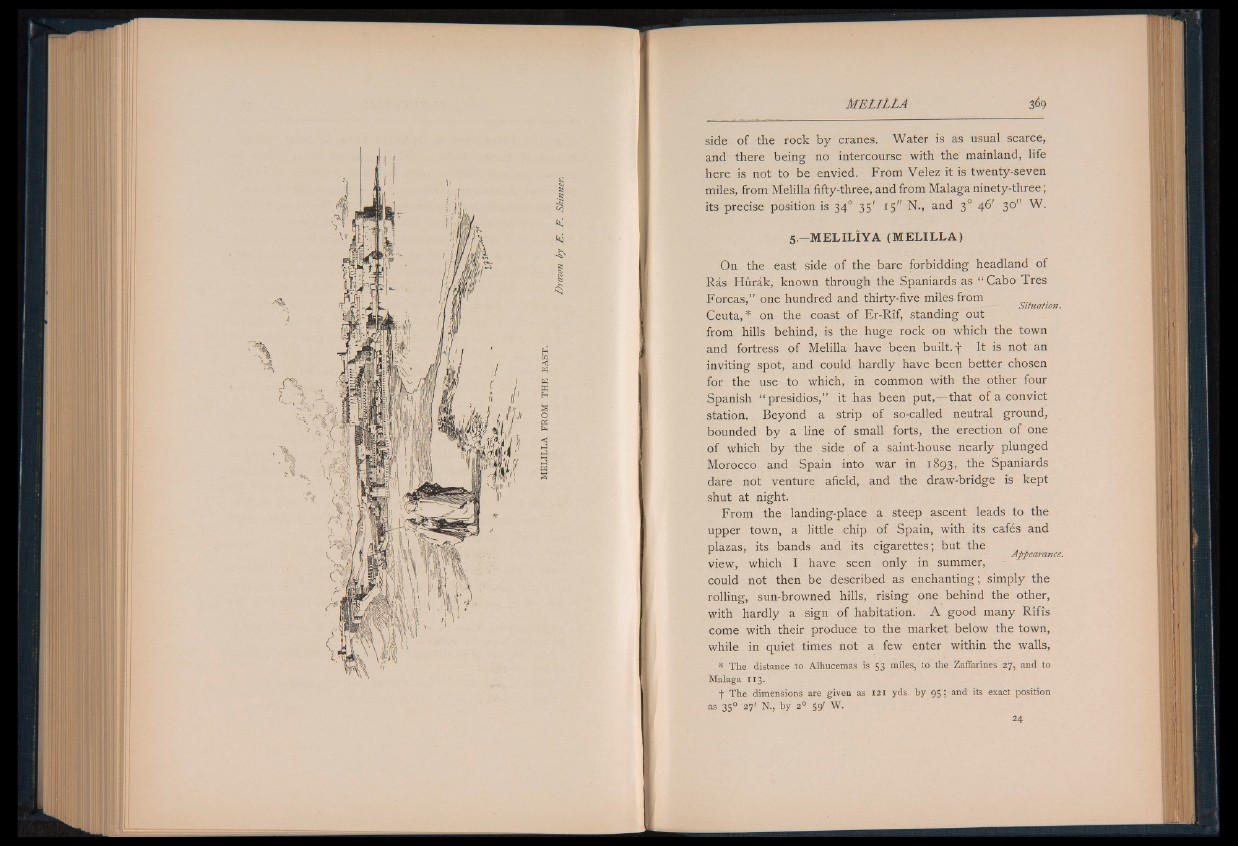
Drawn by E. F. Skinner.
MELlLLA 3<>9
side of the rock by cranes. Water is as usual scarce,
and there being no intercourse with the mainland, life
here is not to be envied. From Velez it is twenty-seven
miles, from Melilla fifty-three, and from Malaga ninety-three;
its precise position is 340 35' 15" N., and 30 46' 30" W.
5.—MELILÍYA (MELILLA)
On the east side of the bare forbidding headland of
Rás Hürák, known through the Spaniards as “ Cabo Tres
Forcas,” one hundred and thirty-five miles from — situation.
Ceuta,* on the coast of Er-Rif, standing out
from hills behind, is the huge rock on which the town
and fortress of Melilla have been built, f It is not an
inviting spot, and could hardly have been better chosen
for the use to which, in common with the other four
Spanish “ presidios,” it has been put,— that of a convict
station. Beyond a strip of so-called neutral ground,
bounded by a line of small forts, the erection of one
of which by the side of a saint-house nearly plunged
Morocco and Spain into war in 1893, the Spaniards
dare not venture afield, and the draw-bridge is kept
shut at night.
From the landing-place a steep ascent leads to the
upper town, a little chip of Spain, with its cafés and
plazas, its bands and its cigarettes; but the L i Appearance.
view, which I have seen only in summer,
could not then be described as enchanting; simply the
rolling, sun-browned hills, rising one behind the other,
with hardly a sign of habitation. A good many Rifis
come with their produce to the market below the town,
while in quiet times not a few enter within the walls,
* The distance to Alhucemas is 53 miles, to the Zaffarines 27, and to
Malaga 113.
f The dimensions are given as 121 yds. by 95; and its exact position
as 350 27’ N., by 2° 59* W.